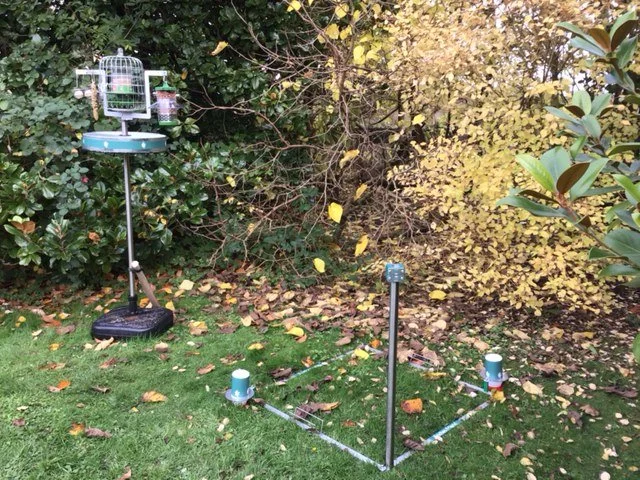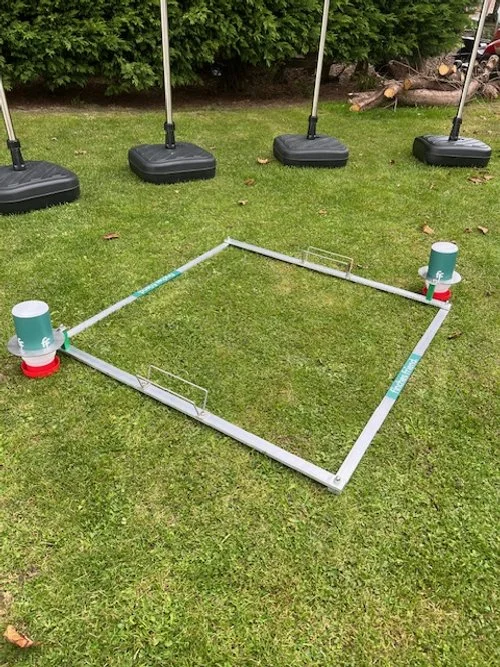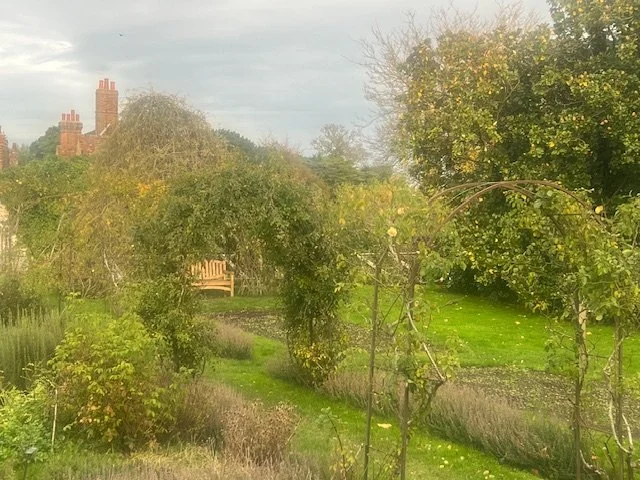The Goodnestone Experiment
Disease transfer hot spots
We have partnered with the people at Goodnestone Gardens in Kent, installing the complete range of Finches Friend cleaner feeding products.
I’d like to take you through what we’ve put into place, and why it’s important to implement a whole garden solution.
The Problem
The Trichomonas Parasite is transmitted in the following ways;
In feeder ports through transmission by a sick bird, this can be direct, saliva to a directly contacted seed, through “hooking” where an infected bird cleans its beak around a port, or in damp food within the feeder where the parasite can replicate independently of the birds.
Through faeces on flat surface feeders or on the ground under feeders.
Through infected dropped food under feeders.
In water sources via faeces and saliva. Sorry but bird baths kill, it doesn’t matter how often they are cleaned.
Feeders, interceptor tray, ground feeding station, water drinker at Goodnestone Gardens
The Finches Friend Solution
In the Goodnestone Experiment we address every single transmission point. We must be clear though, there are no absolutes, it is a percentage game. Wild birds are just that, they do not always behave as we want them to.
Cleaner Feeding Centre comprises of a parasol base which can be filled with water or sand for stability. An upright stainless steel pole, and a bracket system which enables any finches friend feeder to attach centrally over the pole.
At any point in the life of the product, an interceptor, which is adjustable in height can be added. The interceptor will collect potentially disease carrying waste. The waste is inaccessible to the birds and easily cleaned.
Other finches friend products, Cleaner Peanut Feeder or Suet ball feeders can be added.
Ground feeding station and water supply
The Goodnestone set up will comprise of Cleaner Feeding Centre with Interception, Cleaner feeder 1 with ZIG (lots of squirrels there) Cleaner Peanut Feeder, and Suet balls and Millet springs. We will also have Cleaner Window Feeder.
Next Cleaner Ground feeding. There is no doubt that there is a disease transmission zone under feeders in most cases. Most people will be familiar with a muddy patch, created where birds feed on waste cast or dropped by birds feeding above. Pigeon’s, Collared Doves, Chaffinches and magpies are regular visitors. This area will be highly infectious and will enable the parasite to live for days. Just a single infected bird feeding above can drop infected food or faeces.
If we install interception to protect the highly trafficked area, we will not dissuade ground feeders from searching, and we risk moving the problem to a ring outside the interception protection. This year I have sparrows who cast food well over a metre from the feeder, Nuthatches have a similar habit.
As a result we have experimented with tempting the ground feeders away from the danger area. This can be done in the simplest way, it is incredible how quickly ground feeders recognise that a given structure means food, if that structure is easily moved they follow it. That is our Ground feeding Centre. For the first time on public view at Goodnestone.
Cleaner drinker
Cleaner Ground Feeding includes the most controversial element of our work, water. Water should be provided to drink, and be free of faeces. When RSPB release their science, I am confident that Bird Baths will be high on the list of the most damaging products. Watching birds in a birdbath is a wonderful sight, however they drink and defecate in their bath water. If we cleaned a birdbath twice a day it would not make it safe. Generally they are not made with a cleanable substrate anyway. The responsible thing to do is to offer clean dry food and clean water. Let them bathe in a natural environment, not intensively for our benefit.
The last point on ground feeding is that food cast onto grass will get wet, surely that is completely at odds with everything we recommend. Ground Feeders are what they are, at present they have a problem based upon repetitious use of the same area. That is why for us, the rotation of the feeding area is so important. By moving the feeding area every couple of days, toxins do not have the opportunity to build, we get closer to a natural environment. Wet food in itself is not dangerous, it is the combination of damp food and intensive use which helps disease to thrive.
Goodnestone Gardens
RSPB have been invited to engage with the Goodnestone project.
The Gardens at Goodnestone are genuinely wonderful at any time of year, the village is to a great extent a reflection of 1950s Britain. The head Gardiner Paul Bagshaw is the font of all nature knowledge and great fun to talk to if you catch him with a little time. Goodnestone has formal structured gardens, but much of it is unstructured with paths to help you navigate. There is a cafe, and an optional formal tour system. Goodnestone includes a beautiful formal house however that is not accessible save weddings and events.





